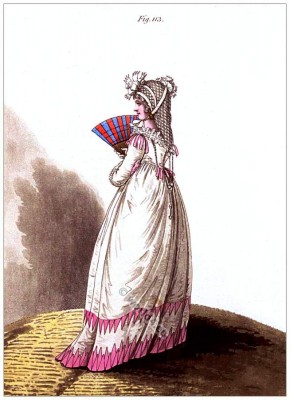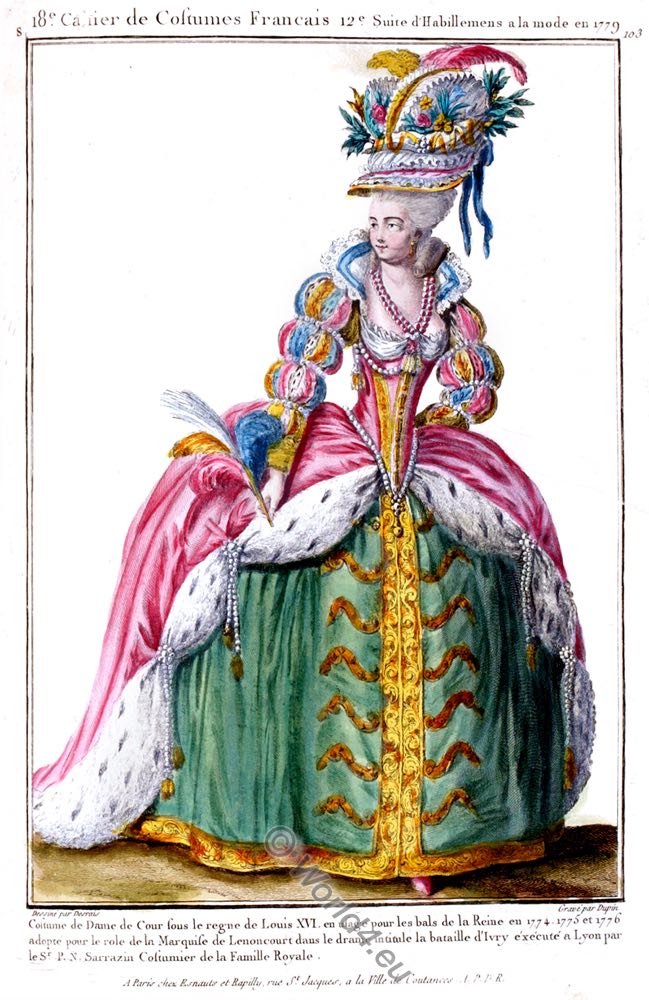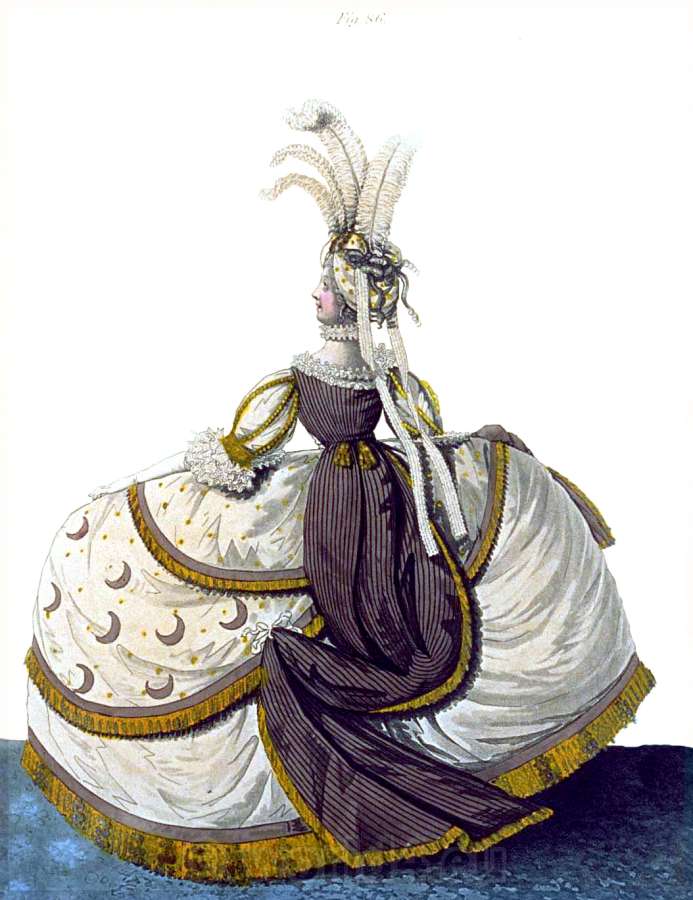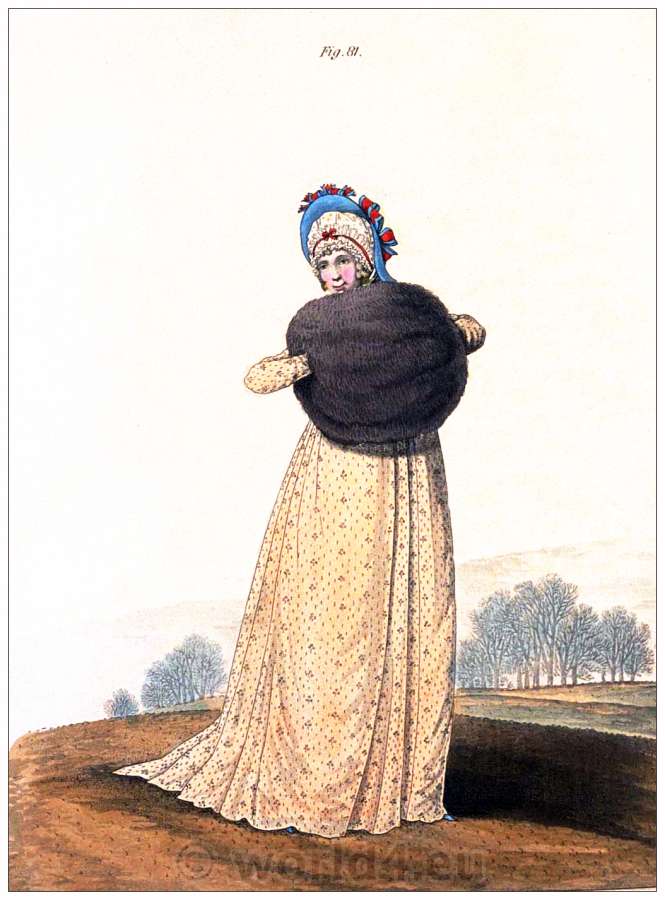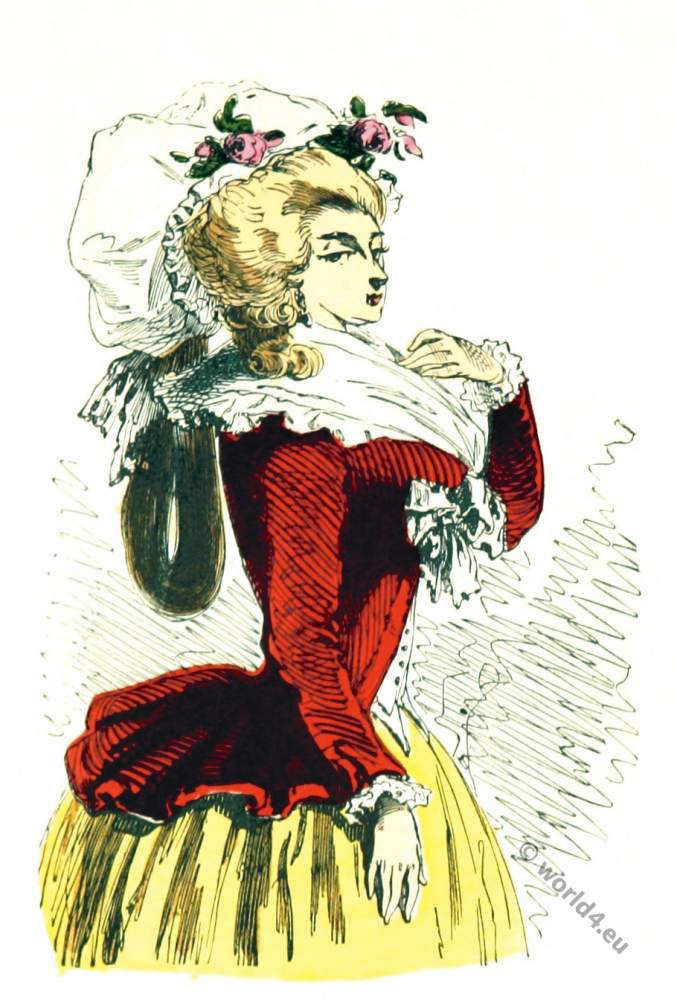Regency Ranelagh Gardens costume. Italian dress.
The Gallery of Fashion September 1796.
RANELAGH
FIG. CXIII.
Italian Dress. The hair round the face in easy curls, white silk net adorned with tassels, trimmed and tied under the chin with white satin riband; chignon within the net. Corset and petticoat of white taffeta, trimmed with silver cords, and at the bottom with deep Vandyke scollops of rose-colored satin; short sleeves trimmed with lace; puffs and epaulettes of rose-coloured satin. Double plaiting of broad lace round the neck. Large gold hoop ear-rings and chain. White gloves and shoes, embroidered with silver.
Gallery of Fashion Vol. 3, 1795-1796. Published by Nicolaus Wilhelm von Heideloff, London.
Associated to:

